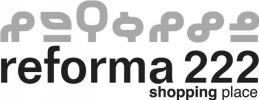Yishai Jusidman
Prussian blue
There are colors whose historical implications overpower their symbolical connotations and even the changing perception of their optical energy and formal potential. Among such colors is Prussian blue (in German.) Discovered accidentally by the chemist Heinrich Diesbach in Berlin in 1704, it was one of the earliest pigments artificially developed and also one of the first artificial colors incorporated by European painters to their repertoire[1].
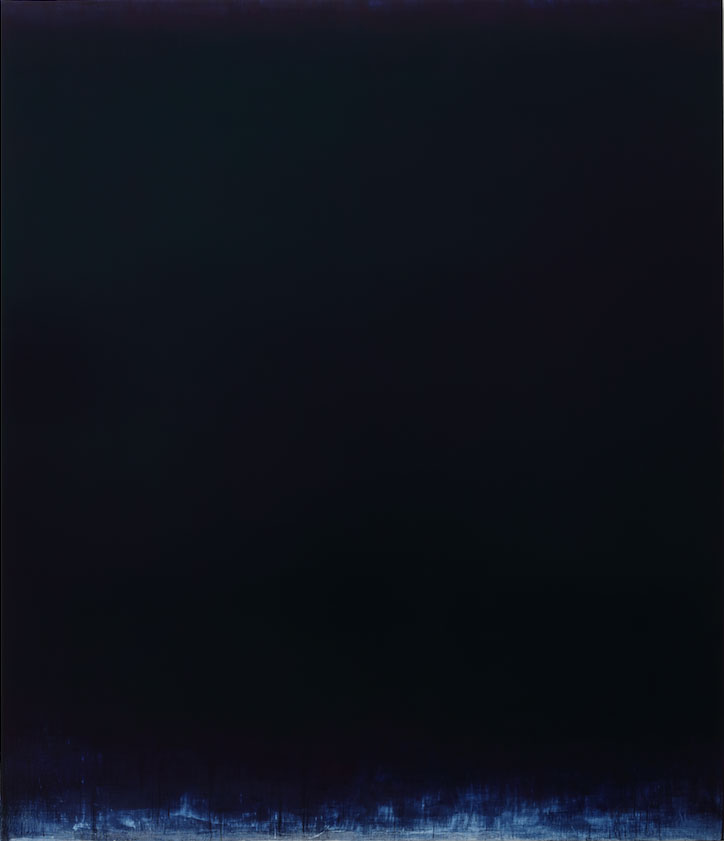
Beyond its designatory identity, the pigment chemically defined as Ferro-cyanide also colors German history: Prussian blue was the coloring agent cosen for Prussian military uniforms in the XVIII and XIX centuries, thus it was the gauge of soldiers who fought against the Napoleonic armies. More recently, and disturbingly, the color Prussian blue became entangled in the Jewish genocide in Europe. The pesticide employed by the Nazis in the gas chambers at concentration and extermination camps was a chemical compound closely related to Prussian blue, a cyanhydric or Prussic acid marketed under the name. In camps such as Majdanek and Stutthof in Poland stains of Prussian blue in the walls of the gas chambers are all too visible to this day.

While certain “revisionists” questioned the function of the chambers at Birkenau due to the absence of blue traces there2, more thorough scientific and historical research demonstrated in various ways the presence of cyanide residues in those structures. Even if such traces do not prove by themselves the genocide —inasmuch as these would be no more than circumstantial evidence for the use of the pesticide, either as disinfectant or killing agent3— it becomes undeniable that the color Prussian blue unfolds, as a result of its startling legacy, a powerful testimonial significance, one that weaves together State violence, technological progress and aesthetic production.
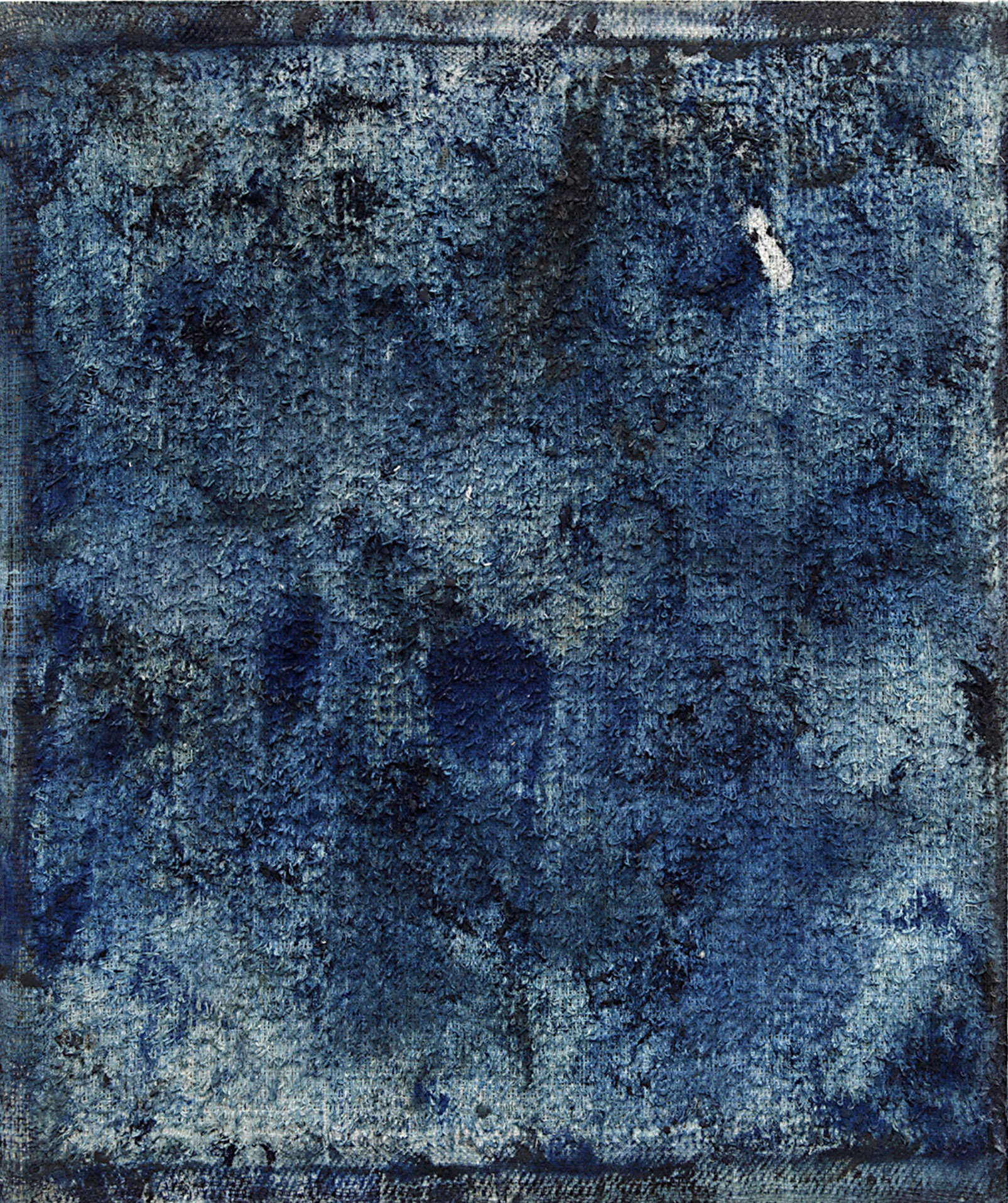
Relationships and tensions that arise between color and history, perception and materiality, picture and painting, are the subject of the remarkable series that Yishai Jusidman has devoted to an extremely thorny problem: how are we to visualize the Shoa? With notable subtlety, Jusidman reworked images of concentratory spaces and gas chambers, painting them, precisely, with Prussian blue paint. And in having resorted to Painting, the artist allows us to plunge into the labyrinth of memory, underscoring the excruciating silence and presence contained in those images thanks to a rendering that is simultaneously distancing and faithful to detail.
If the dryness and coldness of Jusidman’s paintings engender a continuous self-criticality, they also carefully stage a forceful progression of heights and voids: The emotional rawness of these paintings not only emphasizes an architecture, but also a landscape filtered in equal measure through the emotion of Romanticism and the barbarie of war and genocide. While mapping the will to see implied in the testimony of an atrocity through a dialog with historical documents and with the monuments of a melancholic form of tourism, these paintings do not depict so much the historical facts as their aura.
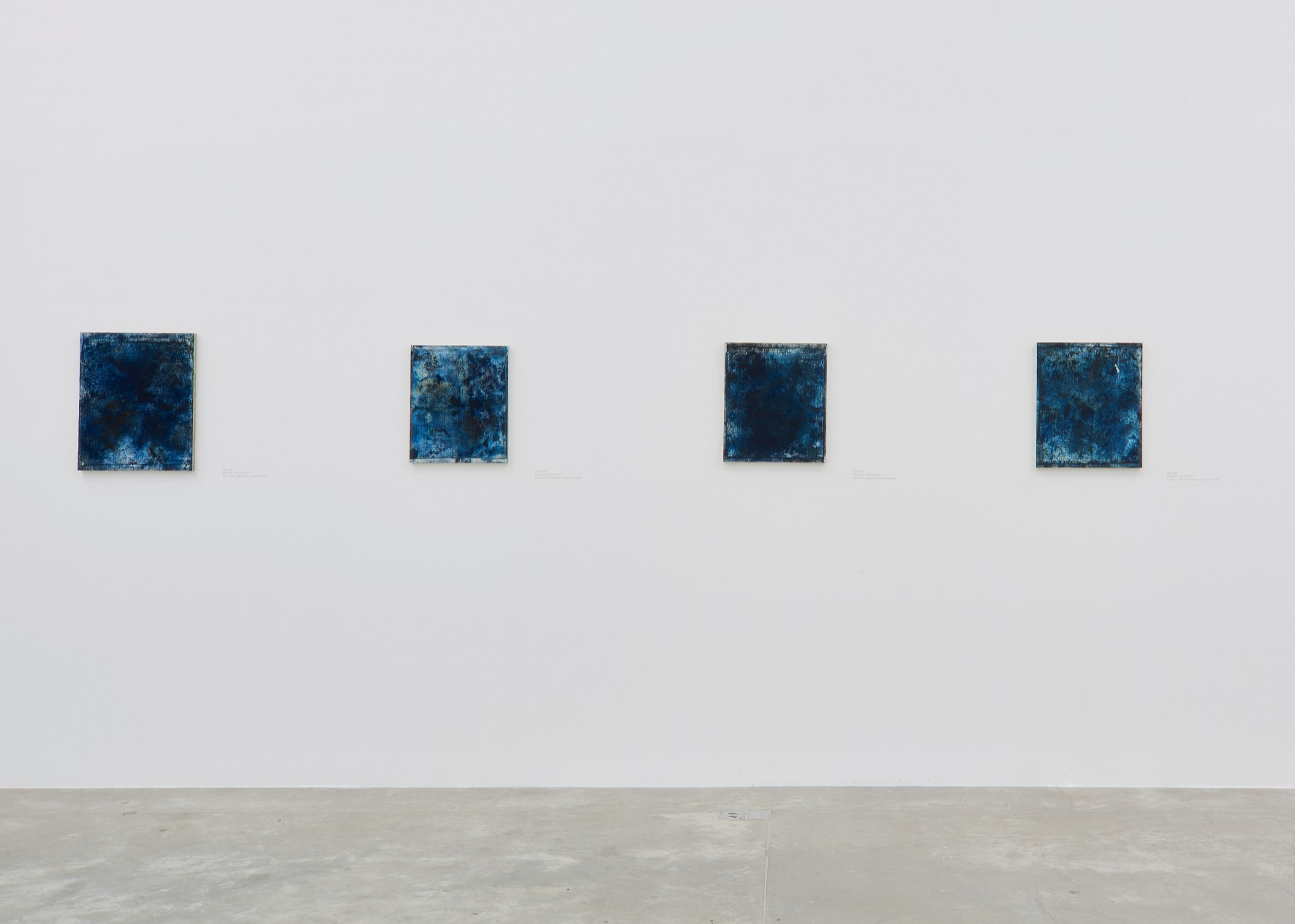
What to do with the evidence that, by way of chemical compounds, death and representation have become intertwined in the remnants of the Shoa? What is the place of color in the darkest of memories of modern European history? Jusidman’s paintings, beyond their inquiry into the visual memory of the Holocaust and their exploration of the ethical limits of its representation, probe the complex rapport between illusion and materiality within every painting: In what measure may the emotional temperature and aesthetic character of a painting establish a relationship with what is otherwise inapprehensible? In dealing with these questions, Jusidman’s Prussian Blue series sets into play the political condition of these particular images and of painting in general in a way that could not be subsumed to the mere portability of a photographic image and the joy found in a welltempered brush.
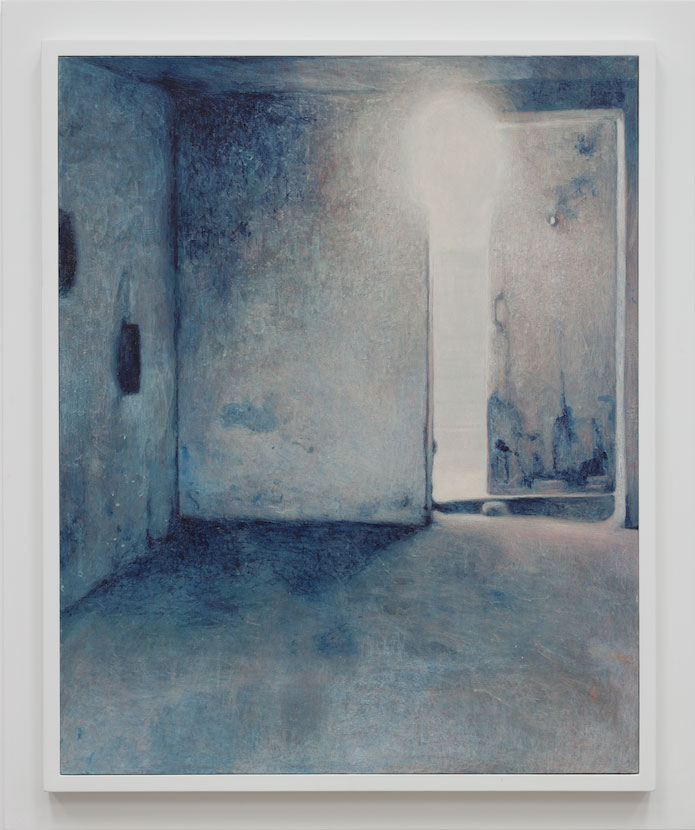
Artist: Yishai Jusidman (Mexico City, 1963)
Curators: Cuauhtémoc Medina and Virginia Roy
[1] Sara Lowengard, “The Creation of Color in Eighteenth-Century Europe: Prussian Blue”, Disponible en línea: http://www.gutenberg-e.org/lowengard/C_Chap32.html
[2] Informe Leuchter, 1988. http://documentos.morula.com.mx/wp-content/uploads/2014/08/El-Informe-LEUCHTER.pdf
[3] Ver: Richard J. Green, “The Chemistry of Auschwitz”, Disponible en: http://www.holocaust-history.org/auschwitz/chemistry/
Publicación
Publication
Yishai Judisman
Authors : Virginia roy, José Luis Barrios, Yishai Judisman, Andrew Weinstein,
Language : Spanish - English
Editor: MUAC-UNAM, RM
Price: $300
